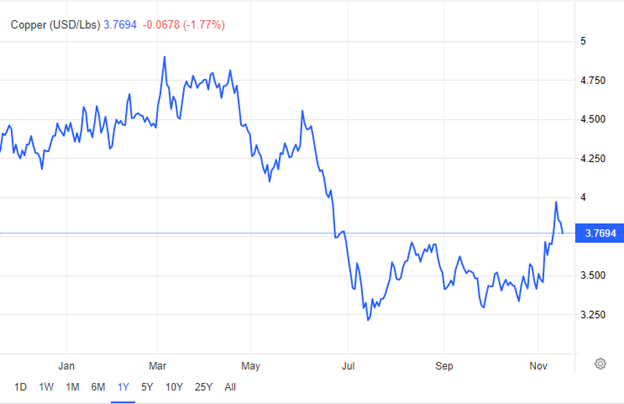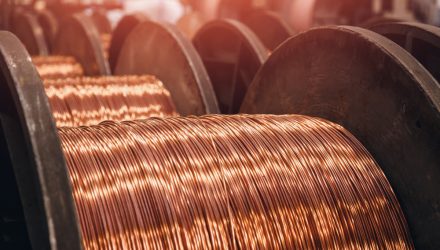It’s no secret that there is a general, established inverse relationship between commodities and the U.S. dollar. Those correlations have become more complex since the onset of the pandemic, but the generalized rule of decreasing U.S. dollar value equates to rising commodity prices could mean that industrial metals are poised for sustained price increases forward-looking.
“The magnitude of this [inverse] correlation varies dramatically, meaning the strength of the relationship between commodities and the US dollar differs by individual commodity,” wrote Greg Liebl, CA, director of investment strategy at Parametric, in pre-pandemic times. “Energy and industrial-metal commodities, which are used globally and whose prices are typically quoted in US dollars, display the most striking relationship.”

Image source: Parametric
Some of those correlations have broken down somewhat during the pandemic, as supply chain constraints and geopolitical impacts played increasing roles on commodity prices, particularly this year. Overall, the inverse nature of commodities to the strength of the U.S. dollar holds largely true and as the Fed considers easing off the gas pedal a bit on interest rate hikes, the historically strong dollar is already beginning to retreat.

Copper is generally held up as the gauge of the health of the economy in its role as a cyclical global commodity. It has been on the rise in November, but fell on news of China’s economic slowing in October: China is a prime consumer of many industrial metals, and while consumption remains constrained by reduced economic activity, so too will the prices of those industrial metals.

Image source: Trading Economics
Change is on the wind, though, for China with its announcement of a 20-point policy regarding COVID-19 regulations that puts more control into the hands of local officials and begins easing off of some of the most stringent quarantine requirements. It will be a slow roll-back of the country’s COVID Zero policy, which has heavily impacted its economy, but the baby steps of recovery could very well lead to a large bounce back in demand for industrial metals.
Once China hits its economic stride again, analysts don’t anticipate metal prices to fall, particularly for the industrial metals central to decarbonization efforts.
“It’s a bit of a fixed supply, like we’re stuck with the supplies we have today. There’s a very strong signal out there right now to increase that supply for a lot of these critical minerals,” Dr. Chris Bataille, adjunct research fellow at SIPA Center on Global Energy Policy at Columbia and associate researcher at IDDRI, told MarketPlace.
Investing in Industrial Metals Needed for Decarbonization
KraneShares launched its newest fund last month, the KraneShares Electrification Metals ETF (KMET), which offers targeted exposure to the metals necessary for the electrification and clean energy transition of the world’s economy in the pivot to net-zero emissions. It’s a unique way to capture industrial metals that have a strong demand outlook in the coming years.
The fund seeks to track the Bloomberg Electrification Metals Index and is comprised of futures contracts on copper, nickel, zinc, aluminum, cobalt, and lithium. These metals are all core components for batteries, electric vehicles, and the renewable energy infrastructure being created and expanded as countries aim for net-zero emissions by 2050 to curtail global warming.
KMET has an expense ratio of 0.79% and is part of the climate-focused lineup of funds from KraneShares.
For more news, information, and strategy, visit the Climate Insights Channel.

